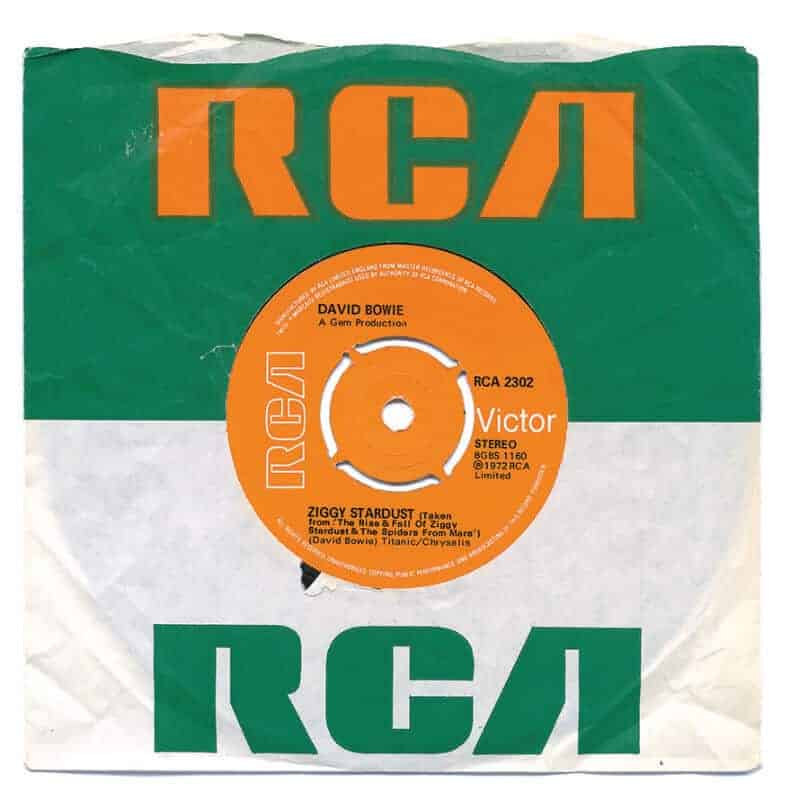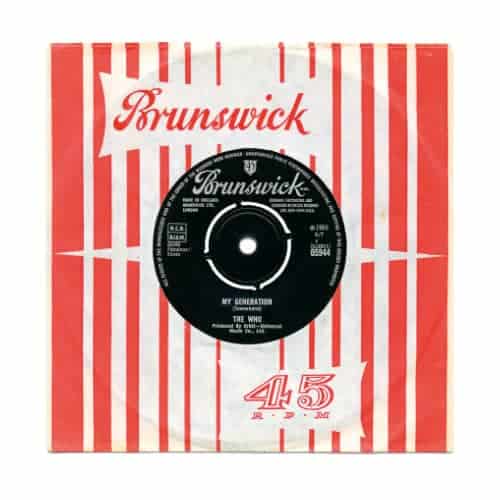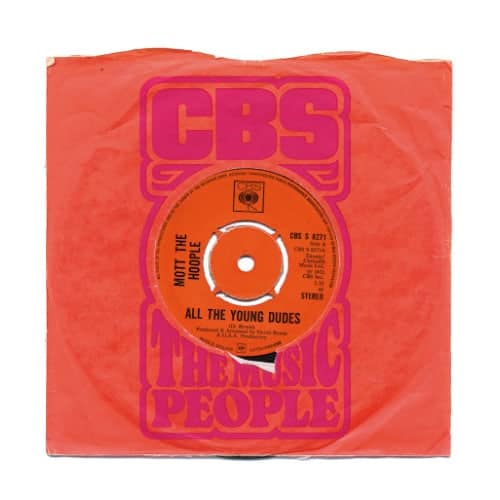Marshall AMPLIFICATION
The greatest British success story ever?

There has arguably been no greater influence on modern music than that of Jim Marshall - the Father of Loud, founder and manufacturer of Marshall Amplification. Modern artists of today are heard around the world amplified by social media. In swinging 60’s London, the sounds from The Who and Jimi Hendrix Experience gigs were heard around the world amplified by towering speaker units built in a shed in West London.
Is Marshall one of the greatest British success stories? Potentially. One could struggle to think of another British company which is so synonymous with a particular popular endeavour the world over. Indeed Marshall’s representation of rock may be so ubiquitous it isn’t even questioned now. How so? The next time you see a piece of print or film wanting to portray someone rocking out, take a look in the background and chances are you will see a Marshall ‘ double stack’. Marshall is the epitome of rock.
So without further ado, here is the story of how a drum teacher from Acton, West London created one of the most iconic British brands in the world.
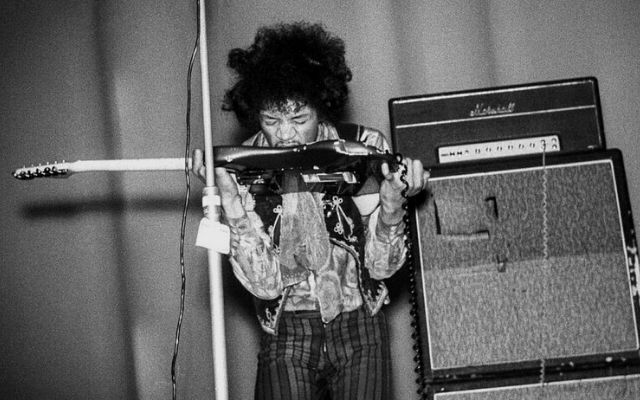
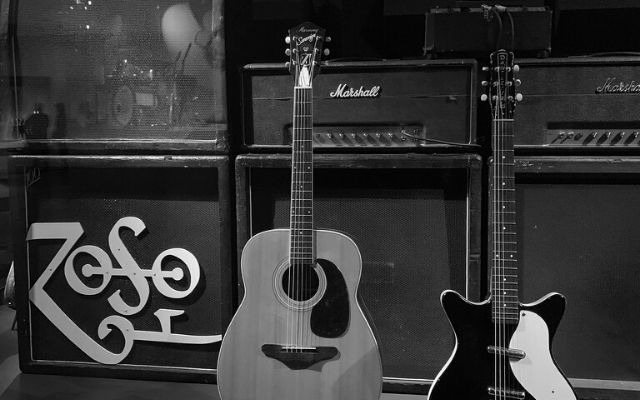
In 2022 Marshall celebrates their Diamond Jubilee and they have come a long way from their humble origins. The first Marshalls were made in a shed by Jim and his son Terry. Interesting fact, none of the people who developed Marshall Guitar Amplifiers were guitarists. Micky Gordge, an experienced violin casemaker, whose own violin cases are now incredibly sought after in their own right, oversaw the final production and that's about as close to a stringed instrument as the maker's experience got them. But maybe the fact that they weren't guitarists helped shape the future sound of guitars; they weren't limited by the knowledge of not trying to build on what came before. Terry was a saxophonist, and it is on the rasping sustain of a sax that the new singing sound of rock was developed.
Birth of a Rock Icon
So if they weren't guitarists it begs the question, why did Jim create the first ever Marshall Amp? It wasn't by accident. He, his wife Violet and son Terry Opened a music shop in 1960 in West London. Some friends of Terry who used to hang around in the music shop complained that they were limited by the amplification available. Their sound was small because their gear was small, or something to that effect. Jim and Terry listened and like many great inventions Marshall was born out of a maker identifying a gap in the market and deciding to take things into their own hands to find a vehicle for the new generation of guitarists. Oh, and who were those young upstarts in the shop? Pete Townshend and John Entwistle of The Who, Ritchie Blackmore of Deep Purple, and ‘Big Jim’ Sullivan one of the most sought-after session guitarists throughout the 1960s and the 1970s, who were friends of Terry and knew the music store through Jim’s drum teaching, one such student was a young man called Keith Moon of The Who.

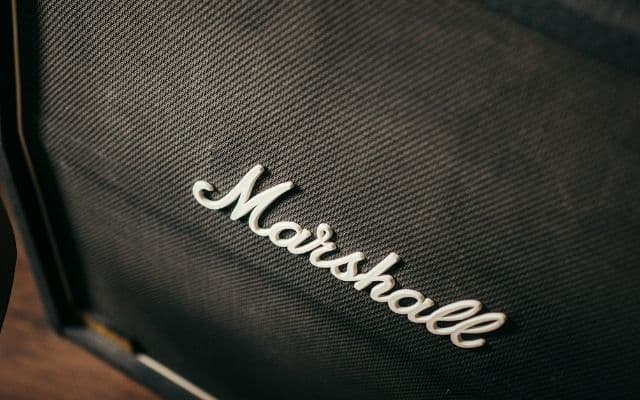
Pete Townshend was quite instrumental in the development process. No doubt if you ask him he will claim he invented Marshall Amplification and all rock music in the same way he claims he invented the internet. But that's an altogether different story. Pete Townshend wanted a bigger sound to fuel and enable the concepts he had in his head that he wanted to deliver with The Who. He originally requested Jim make a huge and heavy 8x12” speaker, which would stand 7 feet tall on the stage. But, thankfully for the health of all roadies everywhere (and posture of parents of budding rockers) this was revised to a moderately more transportable combination of two 4x12” speakers stacked atop one another, one with an angled top, and thus the iconic ‘double stack’ that we see today was created.
British Music and Marshall Exported to the World
Over the years, British bands have had a big hand in exporting the Marshall sound to the world. Each decade Marshall was there to deliver for musicians of the time. The Who, Hendrix (we’re claiming him, because he got his break in London), Eric Clapton and Led Zeppelin through the 60s. Mark Bolan, Mick Ronson (sound smith for David Bowie), the Sex Pistols (to be fair, they were the same amps as Bowie’s, as the Pistols stole them after the Ziggy Stardust farewell concert in Hammersmith), Motorhead, and Black Sabbath through the 70s. Big hair rockers like Def Leppard and Iron Maiden in the 80s. All the way to Noel and Bonehead of Oasis playing in their tracksuits to a record breaking crowd at Knebworth in the 90s. All backed by the double stacked Marshall.
Even Spinal Tap used Marshall. And this is maybe where Marshall spilled off the stage and screen and embedded itself in mass consciousness. Answer me this, have you ever asked, why does the BBC iplayer volume go to 11? That is down to Nigel Tufnel, lead guitarist of Spinal Tap, a fictional character in the iconic rockumentary, or maybe mockumentary, about a heavy metal band and their trials and tribulations on tour. During an interview with Nigel he intently takes us through his vast range of musical equipment, before spending a prolonged period on his ‘modified’ Marshall Amp. "When you're there playing on 10, and you need a little more, where can you go from there?" he asks. "Well…" pointing at the volume knob on his Marshall Amp, "...these ones go to 11". And that's where the saying “turn it up to 11” comes from.
The surge of British bands from the 60s onwards was fueled, or potentially a symbiotic relationship with the cutting edge amplification that was made in the UK. Vox, Matamp, Orange, Selmer, Laney, Hiwatt, Watkins, WEM, HH Electronics, Simms-Watts, Vampower, Burman, and Sound City all created genre defining sounds in their own right. Many with a continuing cult following. But few with the lasting or broad impact that Marshall delivered.
Why are Marshall Amps so Popular?
This comes down to the quality of the build. Marshall amps are built for touring. The production quality might be understated in the success of Marshall. Where other amplifiers failed in comparison was in the fragility of their package. Marshall was built to last and survive significant abuse, whether accidental or purposely inflicted in onstage antics. Many other brands of amplifier are confined to the studio, mothered and molly coddled to get the desired sound. Yet a Marshall just works, as and when you want it to. Plug it in. Turn it up. Make some noise.
Their construction was focused on simplicity and durability. If you’ve ever seen Pete Townshend in his pomp, you will know that as well as surviving being thrown off stage, down stairs and onto the back of a tour truck by a roadie, Marshalls also needed to be able to endure a damn good thrashing by a 6 foot Mod, wielding a Rose Morris imported Rickenbacker as a weapon.


Strip off the black tolex vinyl of a Marshall amp and underneath you will see the work of skilled artisans. They employ techniques designed to provide ultimate strength and durability and the construction is seriously high quality. And it is beautiful too. This isn't a figured or birdseye maple slab that dresses the top of guitars in a flashy way. It is simple birch plywood specifically selected for its great strength not its looks. But it is finished in a very accomplished way - the joints are made perfectly, fit flush and sanded smooth, whether butted or finger joints, with rounded corners on the cabinets which reveal the layers of ply. There is pride and care in the manufacture by skilled artisans, ingrained in the culture at Marshall from 1960 to present day.
As with most musical instruments with a long history the internet is overflowing with forums discussing what impact the methods of construction employed in the different eras had on the sound of Marshalls. Thousands of pounds change hands for original 1960s pieces. Everything from the type of glue, to the gauge of ‘grill cloth’ covering the speakers and size of the plastic logo is claimed to make the vital difference for a guitarist to get that authentic tone.
Marshall’s Image
As well as the sound, playing a Marshall also gives off an image that artists want to be associated with. Pubs, clubs and stadium gigs alike. Status Quo lined up a monstrous amount of Marshalls on their stadium tours because, despite those cabinets actually being empty of speakers, a stage with row after row of double stacked Marshalls said more about their band than the little 2x12” Vox AC30 which was mic'd up backstage ever could.
Noel Gallagher of Oasis had a cream tolex Marshall stack in his living room in the 90s. It wasn’t to the taste of his then partner Meg Matthews. But it was a sign of the change in the perception of what for all intents and purposes was meant to be functional hardware, but crossed the gap from tool to art. There is beauty in the eye of the beholder as they say. Or in the hand of a skilled artist. And maybe the emotion, the history and culture, the occasions and memories which are all wrapped up in a musical instrument ultimately give it a different meaning. It becomes a statement. Furniture is so often a statement piece in our homes afterall.
This is something Marshall picked up on and turned to their advantage when they were reborn as somewhat of a fashion brand after their Golden Jubilee in 2012, creating their stylish, downsized bluetooth speaker range which brought the scrolled logo out of smokey pubs and into modern homes. Maybe even Meg Matthews wouldn’t have minded one of those in her front room. Sadly these smaller units are made in the Far East not in Britain, much like most radio units these days.
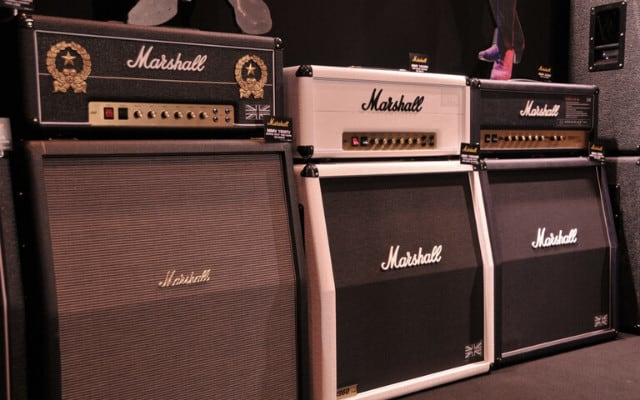
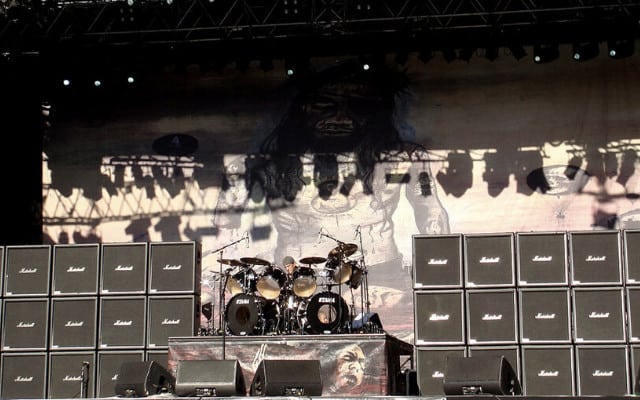
Where are Marshall Amplifiers Made?
Marshall Amplifiers are still made right here in Britain. After leaving the shed in which the 23 original ‘No1’ units were made, Marshall production grew in size throughout the early 60s until they moved to Bletchley in 1967, a place where Marshall still calls home. Some models have been made overseas, but predominantly Marshall’s speakers and tube amps have been made in Bletchley uninterrupted since 1967.
Developments in manufacturing meant a change to ‘printed’ circuit boards in the 70s and 80s, away from the traditional ‘handwired’ models. As is the way with everything the cycle completed its loop with a return to the sought after original manufacturing process in the 2000’s under the premium ‘Handwired’ series, allowing modern noodlers to carve a classic soundscape with their axe. That's not to say the Marshall sound has not evolved however.
Each decade a newly issued Marshall amp brought a new type of sound. Normally louder and 'hotter', or a more distorted, singing sax like sound. It can be debated whether the bands were driving the change in sound and Marshall followed, or whether Marshall provided the platform through which the bands were able to differentiate themselves from the sounds of the decade that preceded them. But on reflection it was remarkably uncanny that decade after decade each new wave of music that bands wanted to play went hand in hand with the new Marshall which was released. Another master stroke which kept Marshall on stages around the world, continually associating themselves with guitar music. Solidifying the bond between rock music and Marshall Amplifiers, helping them to stake their claim as one of the greatest British brand success stories ever.


